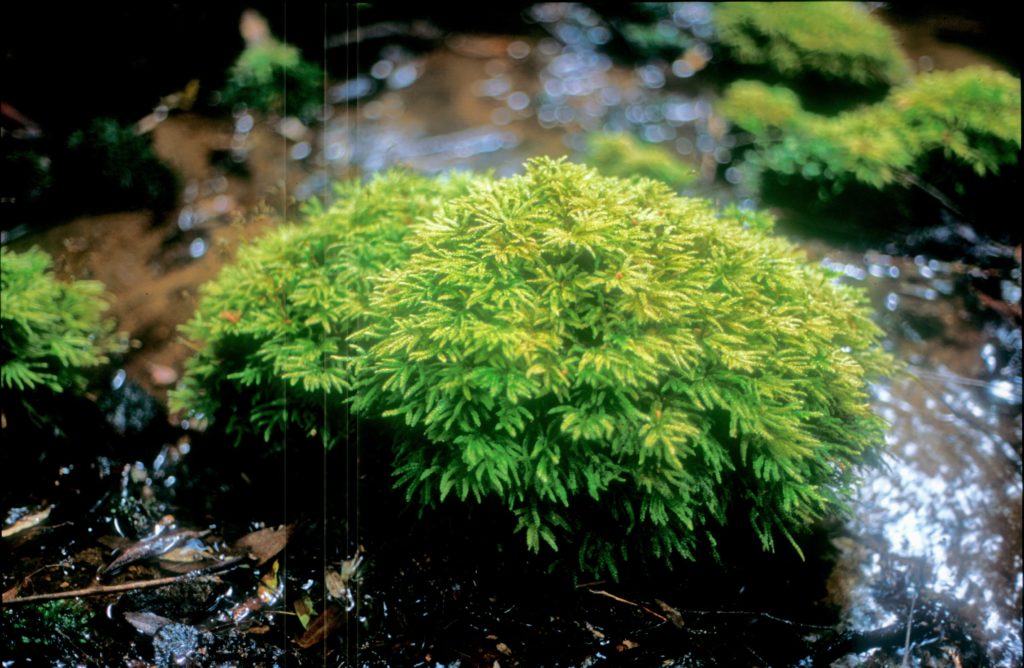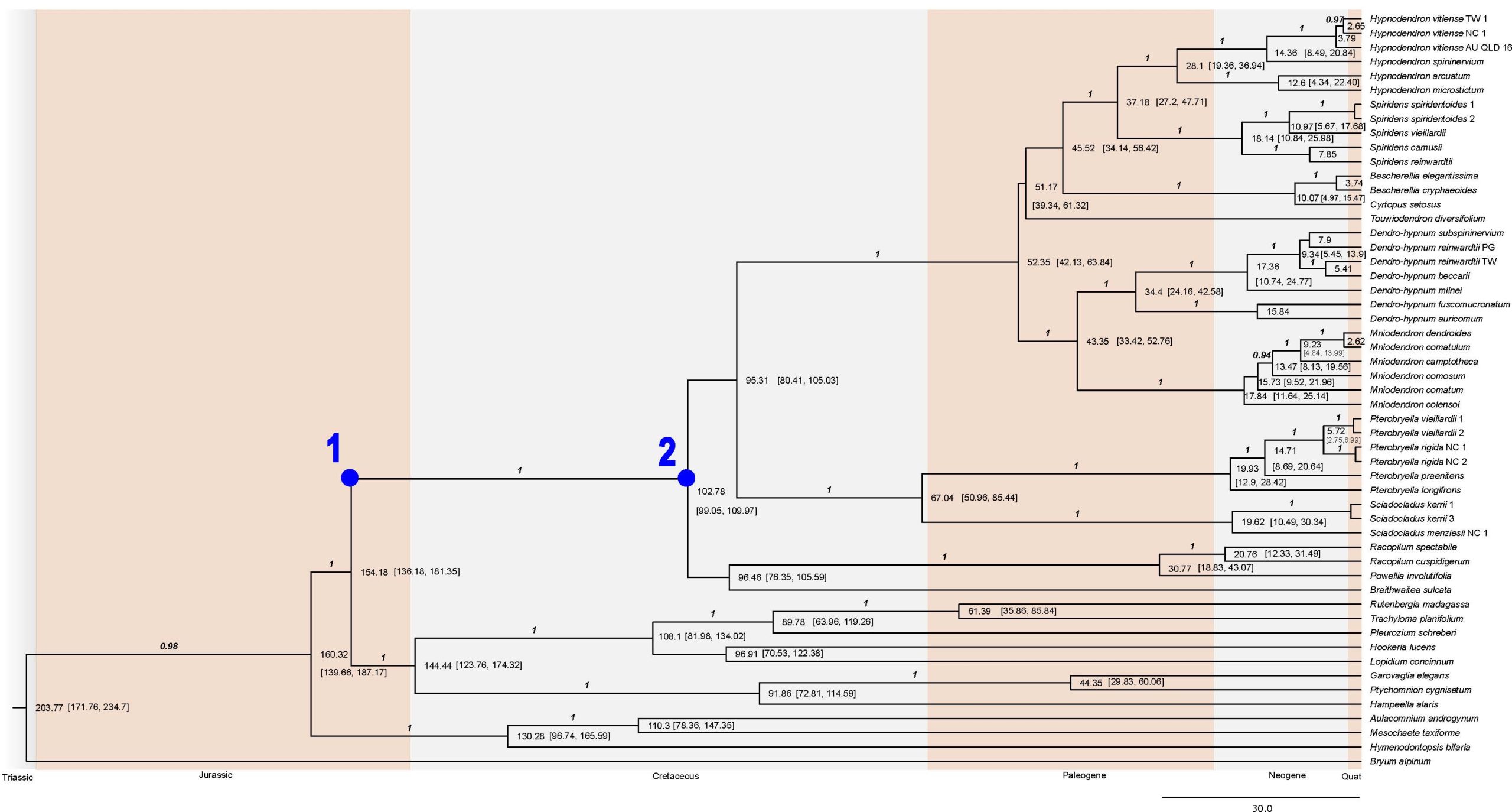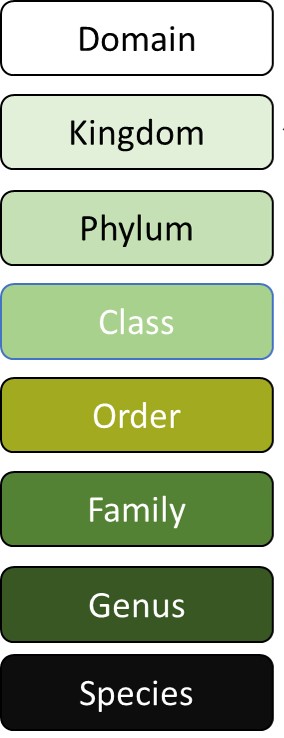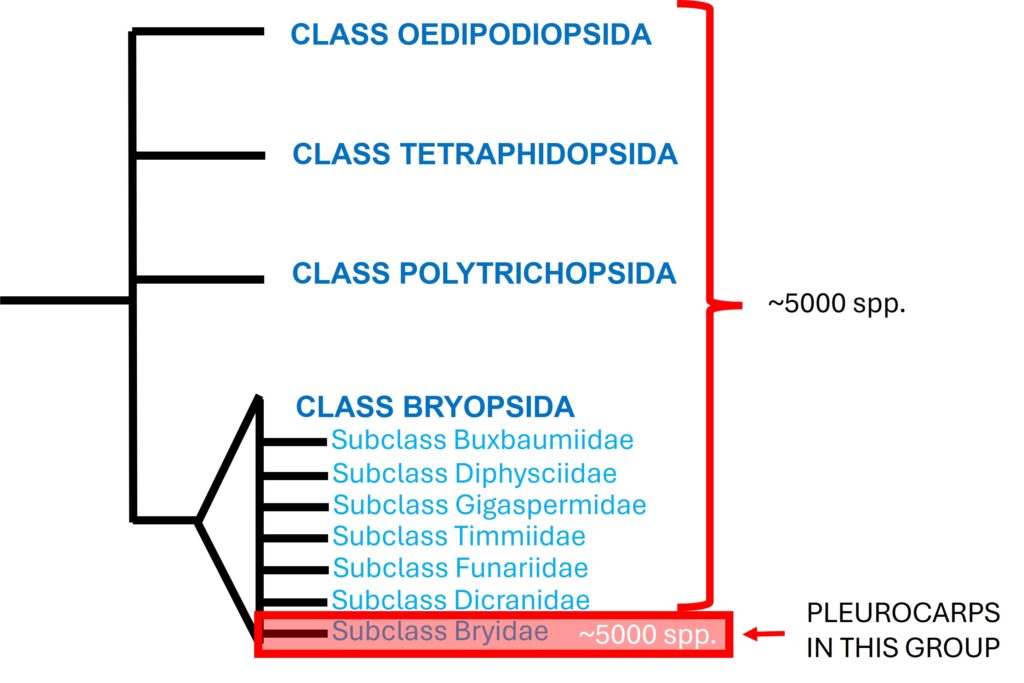The following blog posts on moss evolution are written by Diego Sánchez-Ganfornina (early career researcher).
Migrations, extinctions, rainforests and climate change: the pressures and situations that led tree mosses to grow all around Australasia and subsequently, the world.
We have seen in part I of this saga on moss evolution how these plants are remarkable, resilient and unique; and how some particular groups (pleurocarps) challenge misconceptions of mosses as ancient. In this second part of the saga, we will further explore where pleurocarps live nowadays, as well as introduce in detail the Hypnodendron project, our research endeavour to uncover new stories behind these fascinating plants.
To further understand the moss group we are focussing on, it is important to place it in relationship with all other moss groups. Above, you can see on the left hand side the main ranks used in taxonomy, where a given organism can be classified within subsequently larger “boxes”, from species, to genus, to family, to order, to class, and so on. Mosses are in the plant kingdom, in the Bryophyta phylum (bryophytes group, grouping mosses, liverworts and hornworts together), and within it, there are many classes as can be seen on the right hand side phylogeny. Within these classes there can be subclasses, and at the bottom right we have subclass Bryidae: half of moss species are in that subclass, which is mainly made up of pleurocarp moss orders – our focus group.
As seen above, the classification of mosses is complex. Phylogenies show us the relationships between different groups, and which groups appeared in evolution earlier, and which appeared later. Pleurocarps appear late in the evolution of mosses in subclass Bryidae, and within it, there are several pleurocarp orders, and many families, genera and species – it’s a large group of about 5,000 species in total. Within it, a striking geographical pattern is seen: most orders (including an order we’ll focus on – Hypnodendrales), only occur in the Southern Hemisphere, whereas the Hypnales, the most diverse and latest diverging (latest to separate from the others) pleurocarp order, is most diverse in the Northern Hemisphere. This is a curious, large scale geographical pattern, and pleurocarps have plenty of these geographically astonishing stories if we look at them closely.

Hypnodendron vitiense, a pleurocarp species in order Hypnodendrales that our project focussed on. Credit: Neil Bell
Neil Bell (past supervisor and now collaborator) and I have been able to shine new light into how these pleurocarp mosses evolved and why they are found where they currently grow. The project we’ve worked on together for the past 6 years (informally known to us as the “Hypnodendron project”) is coming to an exciting end as we have now published two journal articles showcasing dates, evolutionary and biogeographical stories in this plant group. And all going well, a third article will follow where we finalise decisions that impact the way certain species are named based on our results.

The above image is one of the results of our published studies. It shows a large dated phylogeny which includes representative species of all pleurocarp moss orders, and focusses on Hypnodendrales. Through our analyses we’ve been able to put dates onto each node on the tree. It is a large and complex phylogeny, so points 1 and 2 (large dots in blue) are to be interpreted and discussed below. The shaded grey and brown blocks separate geological periods, from the Triassic (appearance of dinosaurs) through the Jurassic, Cretaceous (end of which marks the extinction of dinosaurs), Paleogene, Neogene and Quaternary (our current period). Credit: Diego Sánchez-Ganfornina and Neil Bell
The Hypnodendron project has focused specifically on an order or pleurocarp mosses: the Hypnodendrales. This is the first order to diverge within the pleurocarps, and it may hold some exciting evolutionary answers as to why pleurocarps have become so successful. As can be seen in our results presented above, the Hypnodendrales arose from a common ancestor with the rest of the pleurocarps in the late Jurassic (large blue dot labelled 1), although the origin of extant (currently living) diversity is in the mid to late Cretaceous (large blue dot labelled 2). The long branch that joins these two points in the phylogeny can be interpreted as a period of time where all Hypnodendrales that grew and evolved in that period ended up becoming extinct, except the ancestor to all current species. Some fossils found corroborate this finding.
Therefore, all of our current Hypnodendrales species evolved from a common ancestor at the end of the Dinosaurs’ era. This also corresponds to the moment in time when flowering plants were experiencing a large boost in diversity, and the first time in our planet’s history when flowering plants dominated the forests in the shape of large trees, very similar to today’s tropical forests. This expansion of flowering plant-dominated forests had a huge impact on the planets’ ecosystems and global biomes and had a particularly strong effect on the island groups and continents that now form Australasia.
Stay tuned for more as we explore mosses in genera with such lavish names such as Hypnodendron and Sciadocladus (pronounced “Skye-a-doclayee-dus”)!
Research publications produced as a result of the Hypnodendron project:
- Sánchez-Ganfornina, D. & Bell, N.E. (2024). Phylogeny, chronology, and phylogeography in Australasian Hypnodendraceae. Botanical Journal of the Linnean Society, boae020. https://doi.org/10.1093/botlinnean/boae020
- Sánchez-Ganfornina, D. & Bell, N.E. (2023). Species Delimitation in Sciadocladus (Pterobryellaceae, Bryophyta). Bryophyte Diversity and Evolution special issue, 46 (1), 119–124. https://doi.org/10.11646/bde.46.1.15
The Hypnodendron project would not have been possible without the support of the Sibbald Trust.


